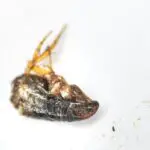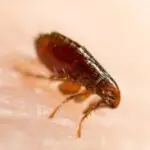What Are Fleas?
Fleas are small, wingless insects with a slender body, a thick cuticle, and bristles and combs. Adult fleas are approximately 0.1 to 0.32 cm long and feed on the blood of mammals and birds. Although the flea order is small compared to other insect groups, fleas are widespread throughout the world. They are native to temperate and polar regions.
Adult fleas spend most of their time on your pet, feeding on its blood and feces. It is important to treat your pet regularly to control the flea population. Fleas are known to cause excessive scratching and can also cause allergic reactions. They can also spread diseases through fecal material and blood meal. Fleas reproduce rapidly. Their eggs fall out of the fur of their host animal and enter furniture, carpeting, or sleeping areas.
Adult fleas lay eggs that hatch into larvae in two to fourteen days. The larvae are a little more than an eighth of an inch in length and feed on the feces and blood of their host. These larvae then pass through three molts to become fully developed. Adult fleas can have as many as 500 eggs.
Fleas can cause a variety of diseases, including the deadly black plague, which killed over 25 million people in 14th century Europe. Before antibiotics were developed, fleas were the main cause of death from this disease. During the plague, fleas were the main vector of the Yersinia pestis bacterium.







